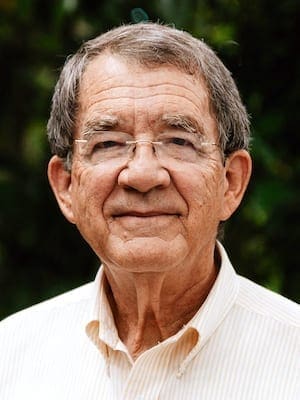It was not likely that the recent verdict in the George Zimmerman trial would establish “justice” in response to the tragic death of Trayvon Martin.
From all indications, the legal process was followed carefully, the jury took its responsibility seriously, and the verdict was rendered in response to the assignment they were given.
Still, the range of variables and the depth of emotion involved made very likely the response that came. Tempers have flared, anger has boiled into rage and the hostility that the trial addressed in the specific case has grown wider.
The trial will take its place in the long list of events that bring us to our knees, causing us to wring our hands and ask, “What’s wrong with us, our society and our world?”
An active and deeply emotional response to injustice of any kind and on any level is natural and understandable. It can be quite destructive but can also fuel corrective action that transforms generations of abuse, discrimination and exploitation.
Such responses can also serve to invite us to look beneath the symptoms that are causing the most direct pain and distress to the underlying social and moral illness that is the deeper reason for the problem.
The public portrait of George Zimmerman presents us with a relatively young man with a complex profile of consciousness.
He seems to have seen himself as a protector of the neighborhood, with aspirations to serve professionally in that role. He found some fulfillment of that desire in a volunteer capacity, which is what he was doing at the time of the tragic incident.
The troubling feature of the public portrait seems to reflect an attitude of suspicion toward those who are different.
Racism has been the obvious accusation, and there is persuasive evidence of that. There seems to be little doubt that racism was a decisive factor in the encounter.
But, I wonder if the deeper malady – including, but reaching beyond, racism – is a consciousness that is predisposed to see the “other” as one who must be guarded against, one who is up to no good and one who must be regarded with suspicion.
The “otherness” might be racial, national or ideological, but the perception is consistent: “they” are out to get us, and we must “stand our ground.”
I couldn’t help hearing the echoes of talk radio and other winds that fan the flames of this consciousness in the bits and pieces of the picture of Zimmerman’s thought.
His tragic act of violence was, fortunately, somewhat isolated, but his thought was very similar to what we see and hear every day on both social and public media.
Enterprising minds always seem to find lucrative veins to mine in the soil of a society that is a mixture of hope, faith and compassion, but also of fear, hostility and threatened security.
Too often, it seems, the frightened and insecure side of our consciousness gets mobilized into protection and security, then to prejudice and profiling, which often leads to racism, anti-Semitism, Islamophobia and homophobia.
Ultimately, this progression culminates in acts of violence on the smaller scale of Trayvon Martin’s death to the larger scale of mass shootings and structured poverty whose victims are seen as collateral damage on the way to the American Dream.
This seems to be a perennial human problem for persons and societies. There is not much evidence to support optimism that it will be solved.
Jesus and his early followers did not fix it, and we probably won’t either. They did, however, model an alternative way of living that testified to the possibility of transformation of this consciousness from hostility to hospitality, from exclusion to inclusion, from alienation to community.
Is it too much to hope that the church that claims his name might do the same?
Colin Harris is professor emeritus of religious studies at Mercer University and a member of Smoke Rise Baptist Church in Stone Mountain, Ga.
Professor emeritus of religious studies at Mercer University, a member of Smoke Rise Baptist Church in Stone Mountain, Georgia, and the author of Keys for Everyday Theologians (Nurturing Faith Books, 2022).

